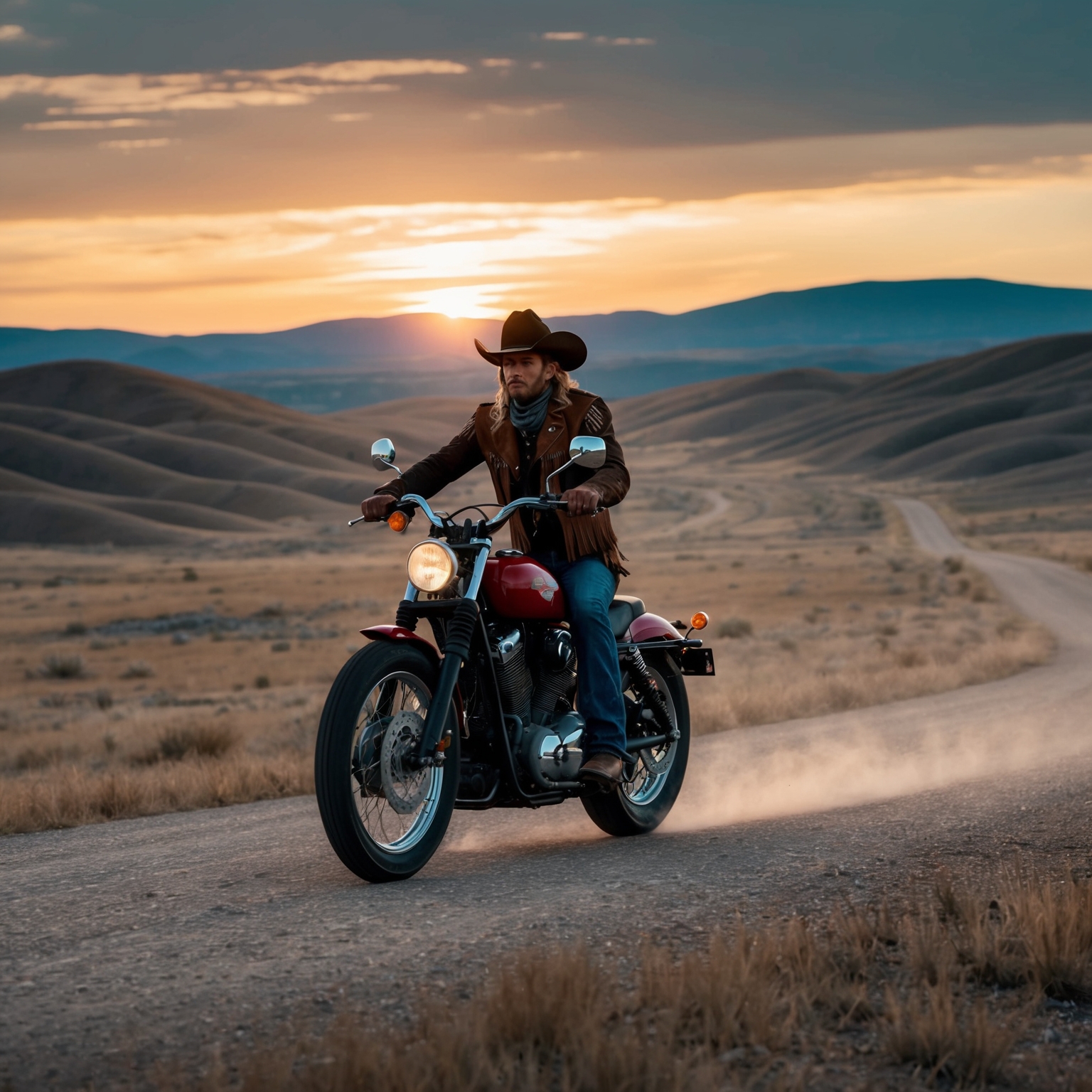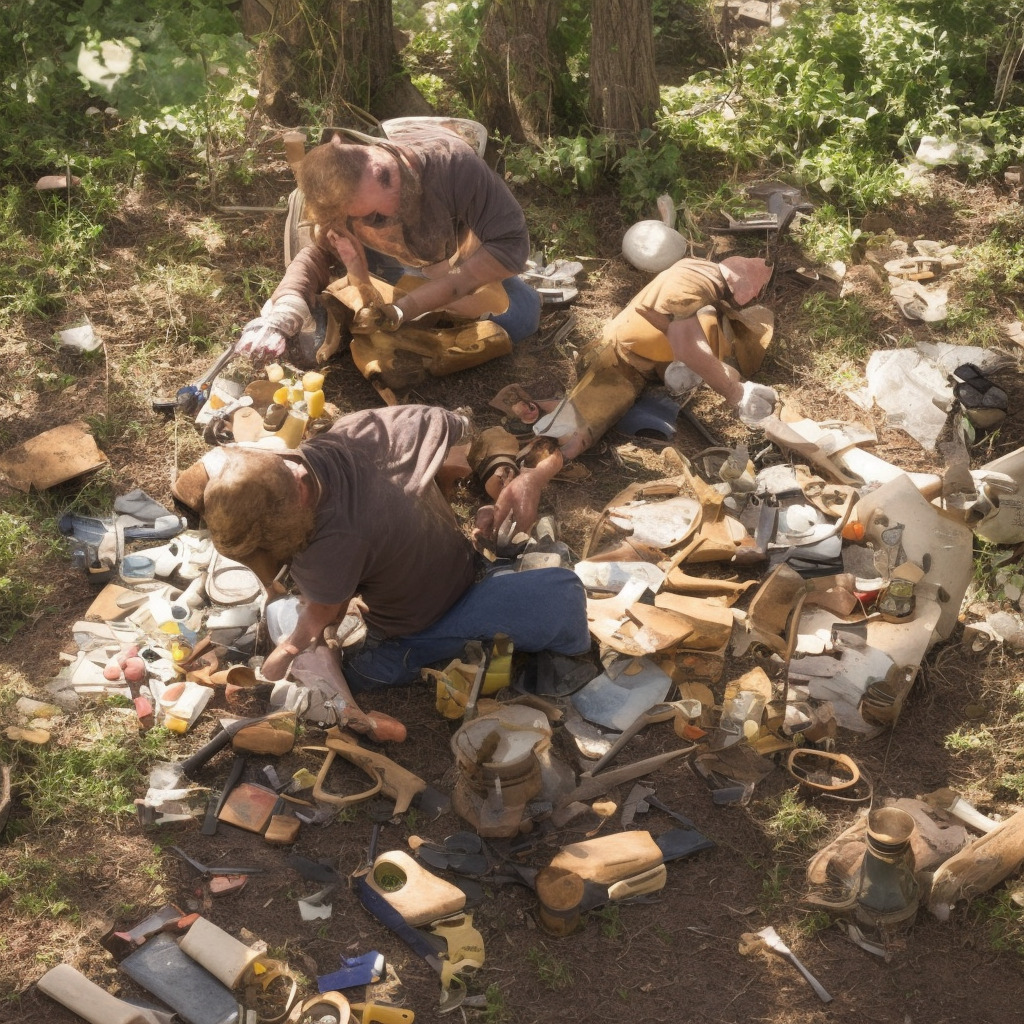Bon Jovi: Rock Legends Behind ‘Wanted Dead or Alive’
Delve into the legacy of Bon Jovi, the legendary rock band behind the iconic track ‘Wanted Dead or Alive’. Explore their journey from humble beginnings to rock legends, highlighting their creative process and impact on the 1980s music scene.

Bon Jovi, an iconic rock band that emerged as a dominant force in the 1980s, crafted a signature sound that blended hard rock with powerful anthems. Best known for their dynamic live performances and chart-topping hits, Bon Jovi’s ‘Wanted Dead or Alive’ became one of their most defining tracks. This song, released in 1986 on their landmark album ‘Slippery When Wet’, encapsulates the rock and roll lifestyle that the band personified during their rise to fame.
Formed in 1983 in Sayreville, New Jersey, the band was fronted by charismatic lead vocalist Jon Bon Jovi, alongside musical talents such as guitarist Richie Sambora, keyboardist David Bryan, bassist Alec John Such, and drummer Tico Torres. Their early days involved relentless touring and energetic performances, setting the stage for their breakout success. During the mid-80s, Bon Jovi’s blend of rock anthems and ballads captivated a global audience, marking their transition from local performers to international superstars.
By the time ‘Wanted Dead or Alive’ hit the airwaves, Bon Jovi had solidified their place in rock history. The song, which showcases Richie Sambora’s iconic 12-string guitar riffs and Jon Bon Jovi’s resonant vocals, was a product of the band’s collaboration and creative synergy. This era witnessed Bon Jovi’s transition into mature songwriting, with lyrics reflecting the trials and adventures of a touring rock band. The creative process was deeply collaborative, with each member bringing their unique talents to the forefront, ensuring that their music resonated deeply with the evolving music scene of the 1980s.
Richie Sambora: The Maestro Behind the Melody
Richie Sambora, a musical prodigy, shines as the composer of Bon Jovi’s “Dead or Alive,” with his unique guitar mastery and dynamic style becoming the soul of the song.

Background and Career: A Guitar Virtuoso
Richie Sambora, one of the iconic composers behind Bon Jovi’s “Dead or Alive,” boasts an illustrious career rooted deeply in rock music. Born in Perth Amboy, New Jersey, Sambora’s journey into the world of music began at an early age. Before joining Bon Jovi, he had already started making waves in the industry with his guitar skills. His musical education was largely self-driven, often likened to that of a maestro who could learn just by listening and experimenting with various styles.
Musical Style and Influences: Blending Genres into Art
Sambora’s musical style embodies a rich blend of rock, blues, and pop. His influences range from legendary guitarists like Eric Clapton and Jimi Hendrix to diverse musical genres including country and blues. These influences are vividly reflected in his compositions, where he has managed to etch his unique signature style. This versatility is seen in “Dead or Alive,” where Sambora’s gripping guitar solos and chords add depth and emotion to the track.
Collaborations and Role in Song Creation
Sambora’s collaboration with Jon Bon Jovi is one of the most fruitful partnerships in rock music history. Their synergy is palpable in “Dead or Alive,” where Sambora’s guitar riffs perfectly complement Jon’s vocal delivery, creating an anthemic rock ballad. Richie played an instrumental role in crafting the song’s distinctive intro and melodic structure, which has become a hallmark of Bon Jovi’s sound. His knack for blending evocative melodies with striking lyrics helped set this track apart.
Impact on the Song’s Success
Richie Sambora’s contribution to “Dead or Alive” cannot be overstated. His composition added significant appeal and contributed greatly to the song’s commercial and critical success. Critics praised the track for its musical complexity, underlining Sambora’s masterful guitar work. Over the years, the song has become an anthem, known for its dynamic and soul-stirring guitar solos that resonated with audiences worldwide.
Legacy and Influence: Leaving a Lasting Imprint
Sambora’s work on “Dead or Alive” has left an indelible mark on the music industry. To this day, the song is frequently covered, its melody revered as a benchmark in rock music. Sambora’s ability to craft such timeless music speaks to his lasting influence as a composer and guitarist, inspiring countless musicians across generations.
Celebrate the Legacy: Awards, Accolades, and Inspired Versions
Wanted Dead or Alive’ by Bon Jovi has garnered accolades, inspiring numerous artist covers and features in movies, TV shows, and video games, cementing its cultural impact.

Bon Jovi’s ‘Wanted Dead or Alive’ is a song that has conquered not just charts but hearts across the globe. Its legacy is fortified by an array of accolades and covers that continue to expand its reach and relevance. Over the years, the track hasn’t just been a fan favorite but also a significant contender in the music industry’s prestigious award circuits. Although it didn’t clinch a Grammy, the song received numerous nominations, making it one of Bon Jovi’s standout tracks during awards season. Its iconic status is elevated further by its consistent inclusion in lists featuring the greatest rock songs of the 1980s, a testament to its lasting impact.
Beyond its accolades, what reinforces ‘Wanted Dead or Alive’ as a timeless piece are the many artists who’ve paid homage through cover versions. Notable covers have come from Chris Daughtry, whose raw vocal delivery adds a new layer of depth, and the hard-hitting metal rendition by the band Hinder. These interpretations across genres signify the song’s wide appeal and versatility, highlighting its universal themes and memorable melody.
The imprint of ‘Wanted Dead or Alive’ isn’t confined to just music playlists; it has also made significant cultural appearances. The song has been featured in popular movies like ‘Harley Davidson and the Marlboro Man’ and ‘Wild Hogs’, enhancing their soundtracks with a sense of rugged adventure. Its presence in TV shows such as ‘Supernatural’ and video games like ‘Guitar Hero’ ensures that new generations continue to discover and appreciate Bon Jovi’s rock anthem. These appearances reinforce the song’s position as a cultural touchstone, resonating with both its original audience and newcomers alike.
Bon Jovi’s ‘Dead or Alive’: A Soaring Success on the Charts
Explore the chart success of Bon Jovi’s ‘Wanted Dead or Alive,’ a rock anthem that soared to number 7 on the Billboard Hot 100, showcasing the band’s prominence in late 1980s rock music.

The song “Wanted Dead or Alive” by Bon Jovi was released on March 2, 1987, and quickly became one of the most iconic tracks from the band. Part of their third studio album Slippery When Wet, the song made an impressive debut and swiftly climbed the charts. Initially charting, it gained momentum due to its compelling narrative and rock anthem feel. It peaked at number 7 on the Billboard Hot 100, marking it as a major commercial hit for Bon Jovi and solidifying their presence in the rock music scene of the late 1980s.
Among several chart successes, “Wanted Dead or Alive” stood out due to its consistent popularity, looking at its track record on the United States charts and its success abroad. The song held its own amidst tough competition from various musical acts of the era, including Billboard giants like Whitney Houston and Madonna. Its chart performance complemented the album’s dominance, as Slippery When Wet itself achieved staggering sales and held the number one spot on the Billboard 200 for eight consecutive weeks.
Critically acclaimed, the song is often hailed as one of Bon Jovi’s anthems, praised for its lyrical depth, and captivating music arrangement. The song reinforced Bon Jovi’s trajectory towards becoming rock superstars, forming part of what would be termed their golden era. Its enduring popularity is evidenced by its regular appearance in pop culture, from being a staple in concert playlists to inspiring covers by numerous artists, thus leaving a long-lasting legacy in the lineage of classic rock.
Capturing the Essence of the Wild West
The music video aspects of ‘Dead or Alive’ contribute significantly to its iconic status, capturing the Wild West essence through live performances and fan-made visuals.

‘Dead or Alive’ by Bon Jovi does not have an official music video in the traditional sense, but its live performances and fan-made videos have significantly contributed to its enduring popularity and longevity. The song’s visual representations commonly align with the powerful imagery of the Wild West, reflecting the theme of life on the road. One notable instance is the live performance video from the band’s iconic shows where the energy, style, and chemistry of Bon Jovi resonate deeply with audiences worldwide.
In live versions, the visual aesthetics often include stark desert landscapes, rugged terrains, and a band of musicians traveling through expansive spaces, paralleling the cowboy life described in the song. Jon Bon Jovi’s captivating presence and strong vocal performance are central, often highlighted amid dramatic lighting and sweeping camera angles that convey both the energy and isolation the song communicates.
The reception to these visual renditions has been overwhelmingly positive, often praised for capturing the essence of the song and enhancing its narrative. Critics have highlighted the interplay between the strong vocal and instrumental elements of the band and the evocative visuals that create a rich, immersive experience for fans. The success of live performances and fan videos demonstrates the powerful connection audiences have with the track, further cementing its status as a rock anthem.
Unveiling the Anatomy of ‘Dead or Alive’
Explore the intricate musical structure of ‘Dead or Alive’, a pivotal track in Bon Jovi’s discography, known for its dynamic blend of acoustic and electric elements, and its narrative-driven composition.

In terms of musical structure, ‘Dead or Alive’ is a quintessential rock ballad that showcases Bon Jovi’s distinguished sound. The track is written in the key of D major, which provides a bright yet powerful foundation suitable for its introspective and liberating themes. The chord progression is relatively straightforward but impactful, combining traditional rock chords with minor chords that add depth and texture.
The song’s tempo is moderate, set at approximately 87 beats per minute, which allows it to maintain a steady pace suitable for both its narrative storytelling and soulful guitar solos. Jon Bon Jovi’s distinctive vocal style is perfectly complemented by Richie Sambora’s expert guitar work, which features both acoustic and electric elements that give the song its unique sonic signature.
Instrument-wise, the track utilizes a combination of acoustic guitar, electric guitar, bass, and drums. The acoustic guitar lays the groundwork in the intro, creating a sense of earnestness and raw emotion, while the electric guitar takes over in the chorus, injecting energy and life. This juxtaposition highlights the emotional contrast between the verses and the more dynamic chorus sections.
Analyzing the melody, harmony, and rhythm, one finds a compelling interplay. The melody maintains a balance between being catchy and emotionally resonant, while the harmony is supportive, creating a rich backdrop for Jon Bon Jovi’s melodic lines. The rhythm section provides stability through precise drum patterns and bass lines, driving the narrative home.
In the context of Bon Jovi’s discography, ‘Dead or Alive’ marks a significant point in their musical evolution. It reflects a maturity in both composition and lyricism that was less evident in their earlier works. Compared to previous tracks, this song represents a thematic and stylistic shift towards more narrative-driven lyrics and a more polished sound.
Interesting facts about the recording process further enrich the song’s legacy. ‘Dead or Alive’ was recorded in Vancouver’s Little Mountain Sound Studios, under the meticulous guidance of producer Bruce Fairbairn. Anecdotes from the recording session reveal a band at the height of their creative prowess, often working late into the night to perfect the track’s unique sound.
Exploring the Themes and Imagery in ‘Dead or Alive’
Delve into the rich themes and evocative imagery of ‘Dead or Alive.’ Explore how Bon Jovi’s storytelling and literary devices paint a picture of the rugged, restless lifestyle of a modern cowboy on a metaphoric journey.
Only the names will change
Everyday
It seems we’re wasting away
Another place
Where the faces are so cold
I drive all night just to get back home
I’m a cowboy
On a steel horse I ride
I’m wanted
Dead or alive
Wanted
Dead or alive
Sometimes I sleep
Sometimes it’s not for days
The people I meet
Always go their seperate ways
Sometimes you tell the day
…
******* This Lyrics is NOT for Commercial use *******
 Lyrical Themes and Messages: ‘Dead or Alive’ is a journey into the soul of a wandering spirit, capturing the essence of rugged individualism and the unpredictable nature of life on the road. Jon Bon Jovi channels the persona of a modern-day cowboy, evoking themes of freedom, restlessness, and existential contemplation. These themes resonate across generations, reflecting a timeless quest for identity and purpose amidst an ever-changing world.
Lyrical Themes and Messages: ‘Dead or Alive’ is a journey into the soul of a wandering spirit, capturing the essence of rugged individualism and the unpredictable nature of life on the road. Jon Bon Jovi channels the persona of a modern-day cowboy, evoking themes of freedom, restlessness, and existential contemplation. These themes resonate across generations, reflecting a timeless quest for identity and purpose amidst an ever-changing world.
Narrative and Storytelling: The song employs a first-person narrative, immersing listeners into the life of its protagonist—a cowboy riding a ‘steel horse.’ This storytelling style effectively draws the audience into the raw, solitary experiences of life on the move. The recurring imagery of the ‘steel horse,’ a metaphor for a motorcycle, further deepens the narrative, illustrating the challenging yet liberating lifestyle of the road.
Use of Literary Devices: Bon Jovi’s lyrics are rich with metaphors and alliteration, crafting a vivid tapestry of images and emotions. The repetition of ‘Wanted dead or alive’ emphasizes the urgency and duality of the protagonist’s life—it’s both a call to adventure and a reminder of mortality. Through powerful imagery and evocative language, the lyrics convey a sense of timeless struggle and resilience.
Cultural and Social References: ‘Dead or Alive’ draws on cultural archetypes, invoking the legendary image of cowboys from Western lore. These references give the song a sense of timeless Americana, capturing both the romance and the harsh reality of the nomadic lifestyle.
Emotional Impact and Relatability: The lyrics evoke feelings of solitude and determination, resonating with anyone who’s faced the challenges of pursuing their dreams. This relatability has contributed significantly to the song’s enduring popularity, making it an anthem for those who seek adventure and self-discovery.
🎸 Did you know? Bon Jovi’s Wanted Dead or Alive was inspired by Bob Seger’s Turn the Page and features iconic 12-string guitar riffs! #RockLegends #80sVibes 🎶 https://bit.ly/3YDhZki
Click to Tweet







